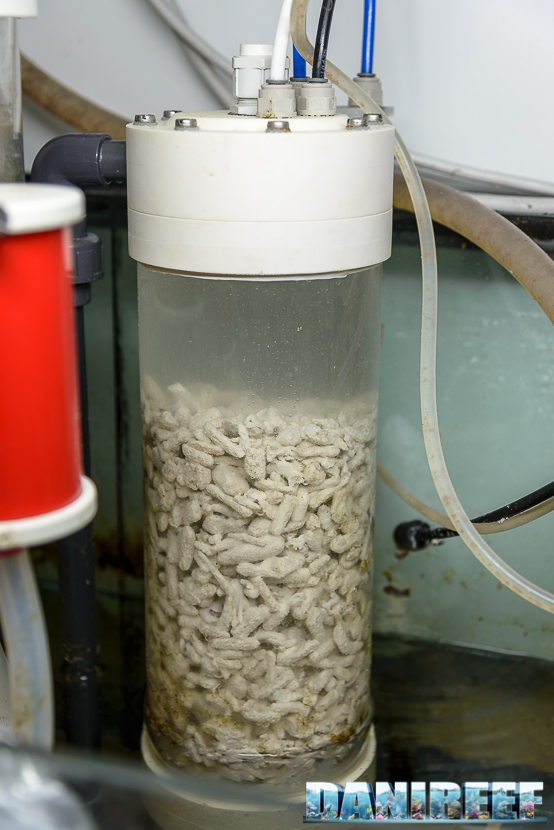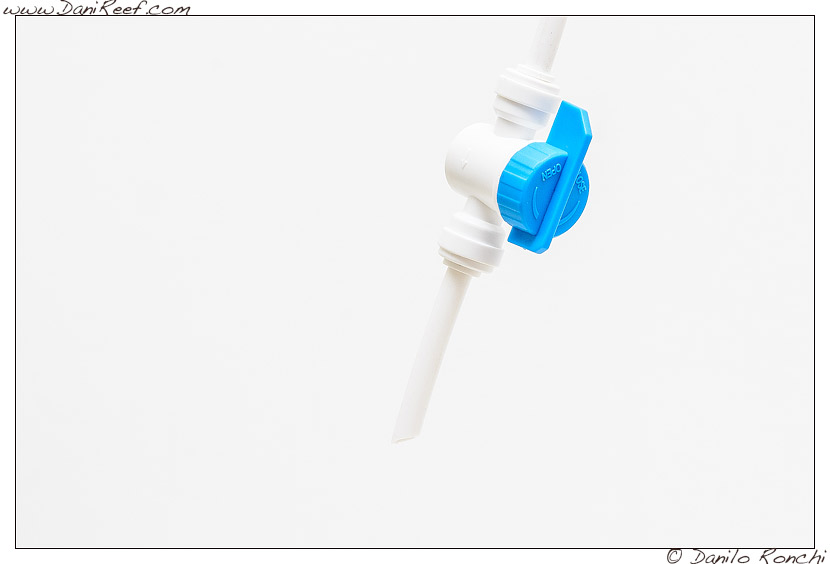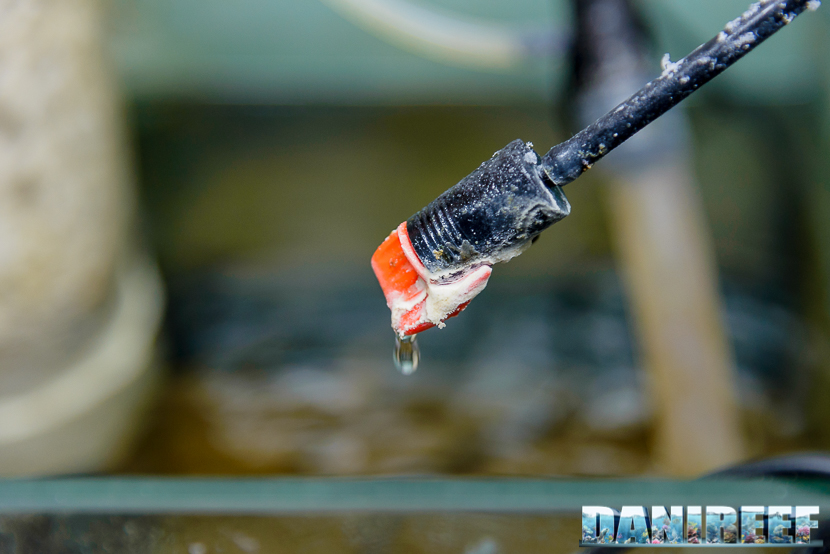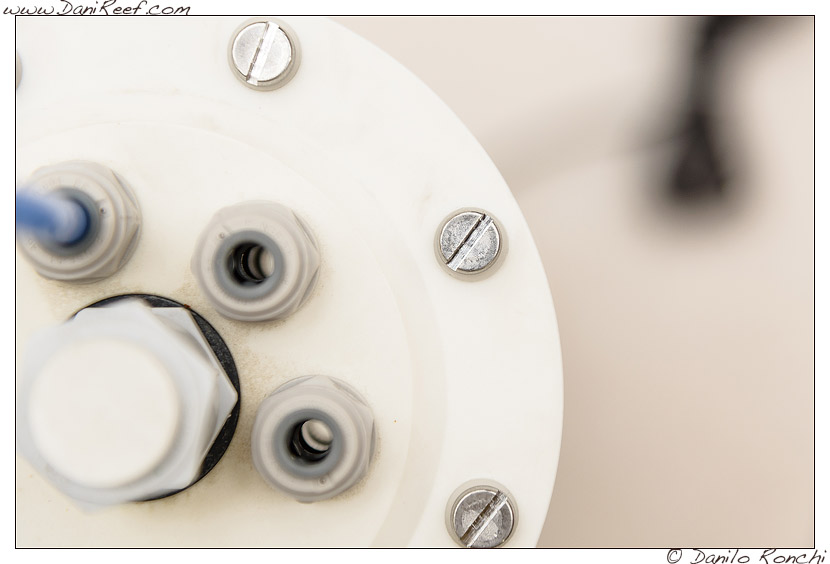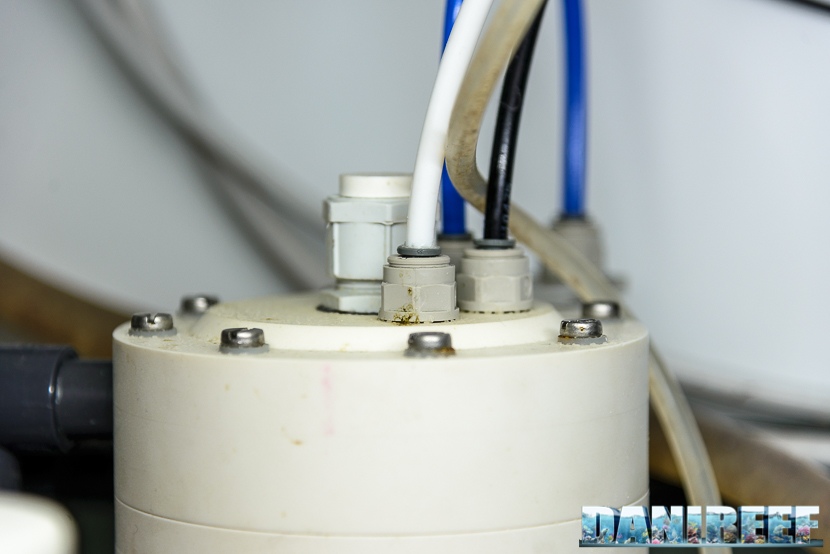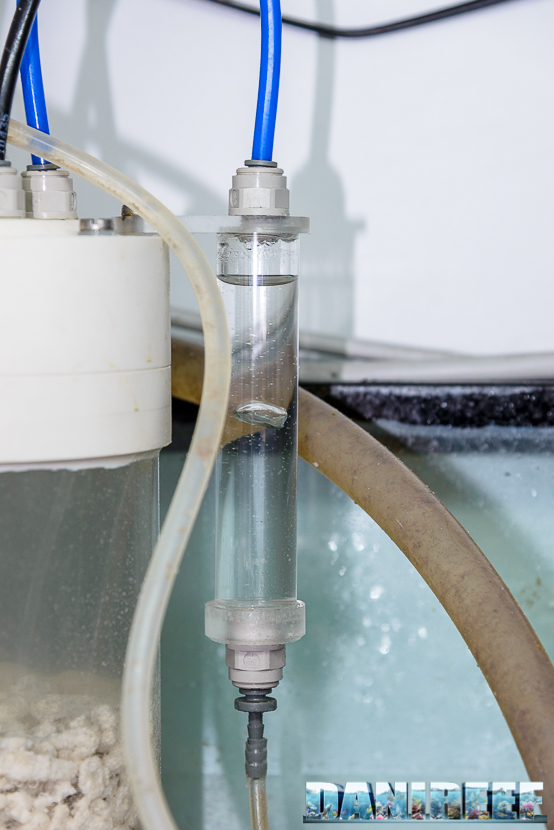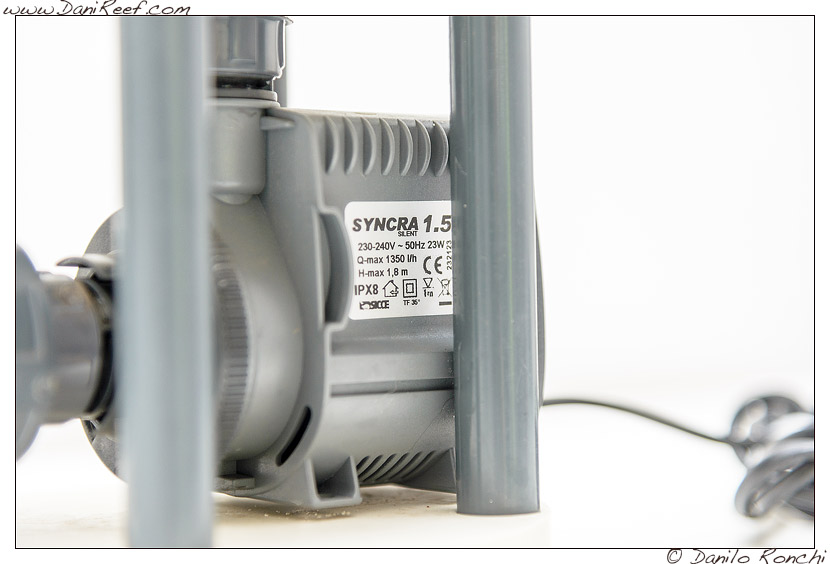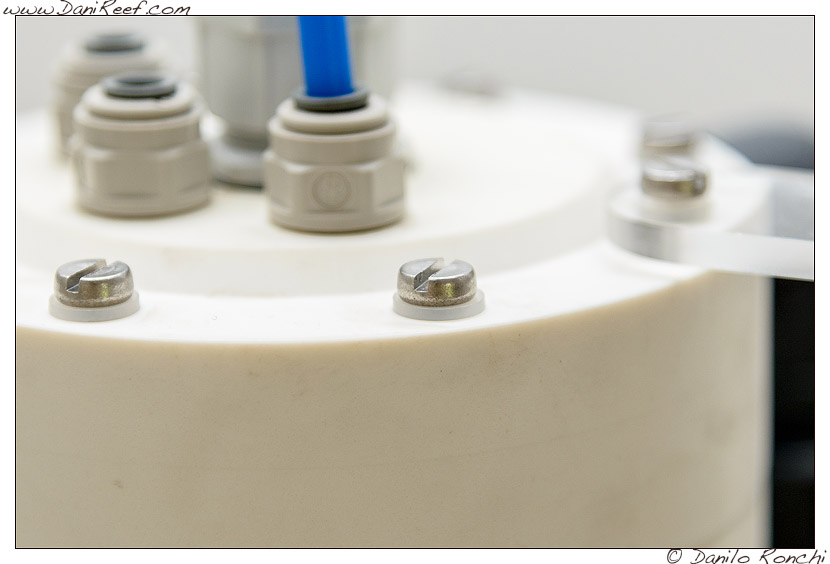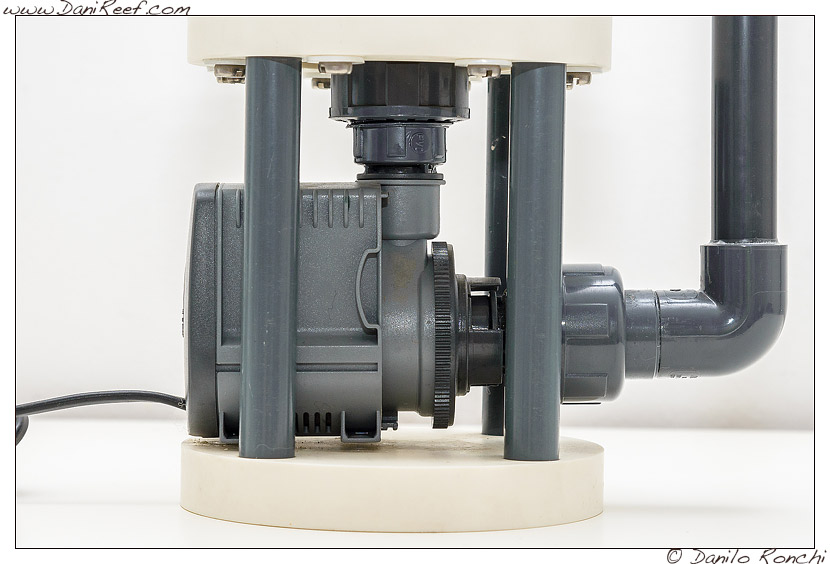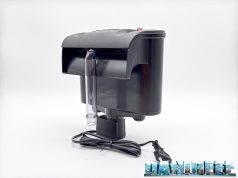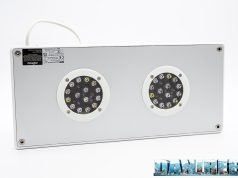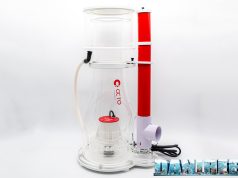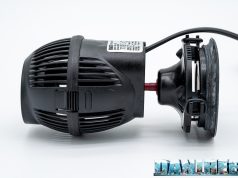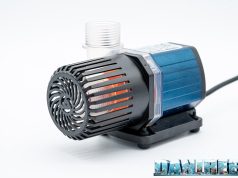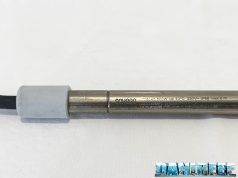Construction
With an extremely simple assembly, it’s quite impossible to make a mistake with the handbook in your hands.
Water inlet and outlet are interchangeable and the CO2 is fixed. You can’t go wrong!
This reactor is airtight and you can place it in or out your sump with an external feed pump. Anyway I suggest you to install your reactor in a plastic tank, not directly on the ground, to avoid water leaks or overflows from John Guest junctions.
Here we can see technical information about the pump, in the brackets our test values:
| Sicce Syncra 1.5 | |
| Output | 1.350 l/h (1.152) |
| Head | 1,8 m (1,7) |
| Power Consumption | 23 w (18,4) |
| Length | 103 mm |
| Width | 46 mm |
| Height | 78 mm |
| Annual electrical bill (in Italy) | 54 euro (43 euro) |
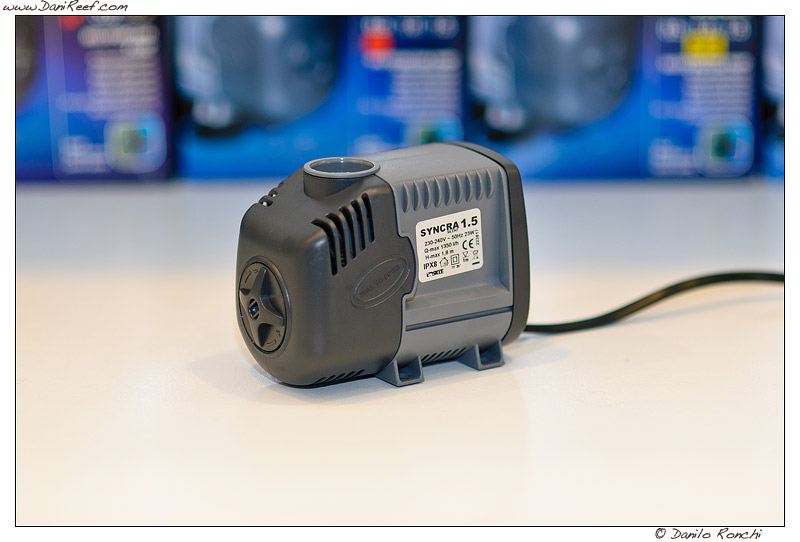
The perfect media for this reactor, with a bottom diffusion, is a medium coral gravel or jumbo. Also ARM, especially large-grained, can be appropriate with this diffusion system. I can advise you against using fine-grained materials as calcium carbonate. Using very compact materials, the bottom diffuser could not be successful in maintaining a stable pH level in the whole column, with a drastic performance reduction. Furthermore, fine-grained materials could jam up the diffuser, damaging its performance. Using large-grained media you won’t have trouble.
After assembling the pump and placing the reactor in your sump, you can connect pipes, bubble counter, non return valve and the CO2 gas cylinder.
The first valve, provided by UltraReef, was not ideal and they changed it immediately. The new one has never blocked, until now. Here below you can see the first valve, really awkward.
Here you can appreciate the new valve, put in as standard by UltraReef, exactly alike a LGMAcquari valve, with an impeccable functioning.
I can’t report problems in ordinary usage, I’ve been using it for 6 months and it runs like clockwork, even during blackouts, true or simulated, starting to work again the power cut without any problems.
Media refill system
Like all calcium reactors, media loading takes place from the top. You must unscrew all the 8 steel AISI316 threaded screws (made with titanium in the near future) and pull out the top cover with its pipes. Before doing it, you must take care to cut the CO2 supply, the water feeding and the pump, being able to work directly in your sump.
Many people don’t like screws, but I prefer this solution, apart from the Elos system, probably impassable as you can see in our review of the Elos REA 120 Plus, because I can fill up the reactor without pulling out from the sump and unscrewing the top cover.
You can disassemble this reactor easily and you can inspect it with your hands. You can clean it easily, at least once a year.
Manual calibration
Reactor calibration is extremely simple and you can make it regulating the number of the CO2 bubbles from the pressure reducer, balancing them with the valve.
I suggest you to start with one bubble of CO2 every two seconds (input), and a drop of water every second (output). Co2 will regulate the internal pH while the water flow will regulate the balance. Essentially, CO2 input and the internal pH show me how much media I can dissolve, whereas the output water flow indicates me how much dissolved media I’m dosing to tank. To have a perfect calibration you must test Ca, KH and Mg before the reactor placement, then you can assemble and calibrate it. Only after 24 hours you can test the three values again, once in your tank and once at the exit of the reactor, to check if the three values are adequate.
Now you can compare values, one in your reactor and one in your tank. Your reactor, at the best possible performance, would have a KH more than 30. If at the second test your KH is less than 30, you must increase CO2 bubbles without adjusting drops. After 24 hours you must repeat your test. When your KH is more than 30, you must test Ca value before and after having installed the reactor. If your value is lower you must increase water exit, if it’s the same value is perfect and if it’s increased you must reduce drops at your reactor output.
Now we have a little problem, changing output flow we’re reducing pH in the reactor, because we’re treating a different quantity of water. So you must change CO2 bubbles, depending on the output water flow. With the passing of time your corals will grow and they will need more calcium, forcing you to re-calibrate your reactor. In the same way, coral gravel and efficiency of your calcium reactor will decrease. I advise you to keep your reactor full for three quarters and to top up it frequently.
Calibration with pH probe and solenoid
Using a pH probe (directly inside the reactor) and a solenoid valve is the best way to make your life easier. Measuring the internal pH value we can regulate the solenoid to control the CO2 supply, when a specific value is passed. In my case I have set my Biotopus to dispense CO2 when my pH value is more than 6.25. With my coral media and this setup I can reach 600 ppm of calcium and 42 KH. My CO2 usage is not excessive, I can feed my reactor for 30-45 days with 1 kg of CO2.
Using a pH probe can give you a steady provision from you reactor, even if your coral media decreases, and can protect your system from a CO2 overdose, in consequence of a media reduction or changes in your feed pump flow. You only have to calibrate your probe frequently, about every 40-45 days according to your experience.
If you have problems with algae in your tank, stimulate by a low pH value, you can also consider this solution. pH reduction usually happens in the night, so using a solenoid, a timer or a programmable computer, you can put your reactor to work day time, stopping only the feed pump during the night. This way, you don’t decrease the pH value in your tank in the night. Water can circulate in the reactor and CO2, controlled by the solenoid, is not supplied. No problems with water stagnation or CO2 surplus in your reactor.



